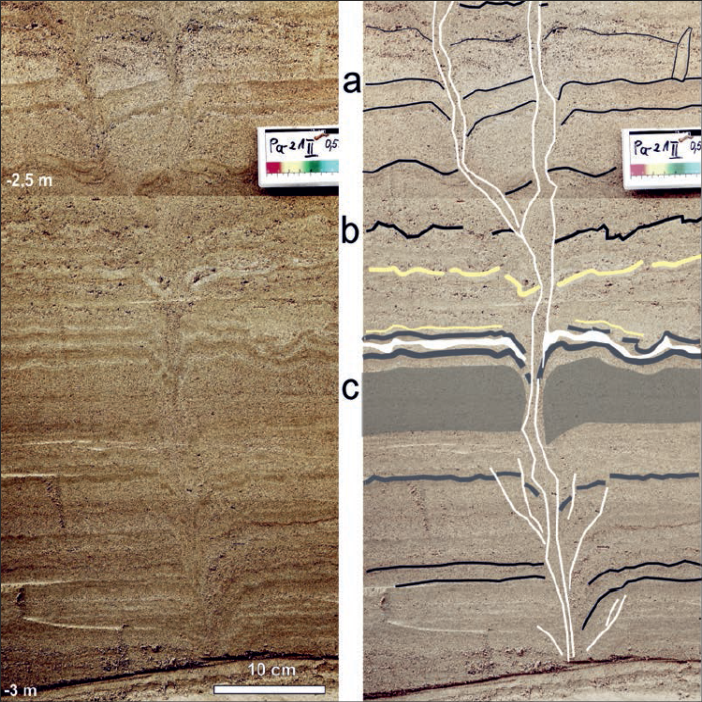Traces of late Quaternary seismic activity in aeolian sand in the Dunaszentgyörgy–Harta Fault Zone, Hungary
Abstract
In Upper Pleistocene wind-blown sands exposed in the trenches Pa-21-I and -II, excavated in the framework of the geological research program of the Paks II nuclear power plant extension project, multiple features have been recorded which can be linked to seismic events.
The features can be classified into two groups: plastic soft-sediment deformations and fractures. The first group is represented by asymmetric, inclined or overturned folds and by water escape structures, which are restricted to narrow stratigraphic intervals. Liquefaction-induced deformations could have been produced by earthquakes of a minimum magnitude 5. Based on their orientation, steepness, inner structure and location, the fractures can be linked to the activity of the Dunaszentgyörgy–Harta Fault Zone, a major transtensional structure in central Hungary, and fit into the fault pattern interpreted from seismic reflection profiles. The structures deform sands with an age of approximately 20 ka derived from OSL measurements, thus they prove the late Quaternary activity of the fault zone. Based on the upward penetration of fractures and the position of soft-sediment deformation levels, three seismic events can be inferred.
Earthquake recurrence times can be estimated to be of the order of magnitude of around 1 ky. Next to the fractures, sand layers may have experienced a few cm of deformation, and a few cm of extension may have happened along the fractures as well. However, no vertical or horizontal relative displacement of the sand bodies on the two sides of the fractures can be detected. A possible explanation is that displacement at depth was accommodated within thick loose sediments near the surface, over a wide stratigraphic interval, and thus the surface did not get deformed. Most of the documented fractures are probably not direct continuations of fault branches, but instead are dilation fractures or sand injections formed indirectly by earthquake waves above the faults.
















